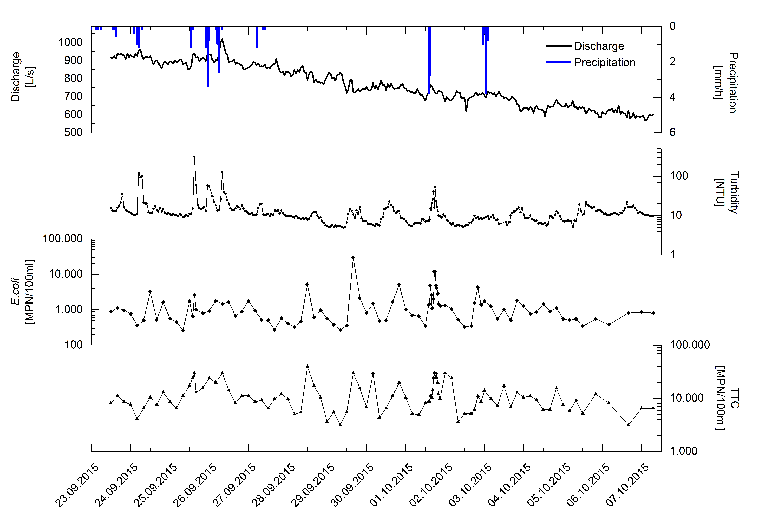Water Quality Monitoring

Background
Due to the low filtration effect of carbonate rock, karst aquifers are especially susceptible to contaminant influxes. Thus, the short retention times of precipitation in the karst lead to high run-off gradients and to swift and, in part, very pronounced fluctuations in water quality. In mountainous and rural regions such as the Dong Van karst region, chemical water quality is mostly sound, while an extremely variable and, in part, very high proportion of fecal and pathogenic microorganisms (bacteria, viruses, protozoa) and suspended particles cause great problems.

Example of the chronological sequence of precipitation, spring discharge, turbidity and fecal bacteria (E. coli and TTC = total thermotolerant coliforms) at a karst spring in the Dong Van project region from the year 2015
Objective
During water quality monitoring in the drainage basin of the Seo Ho Hydroelectric Plant, it could thus be demonstrated that the karst water exhibits microbial water quality, which temporally fluctuates strongly, and suspensoid load, including abrasive particles. To monitor water bodies like the Seo Ho River (to, inter alia, guarantee minimum raw water quality and protect hydraulic machines from abrasion damage), an early warning system with a multi-channel particle counter shall thus be developed and deployed illustratively at the Seo Ho Pilot Pump Plant
